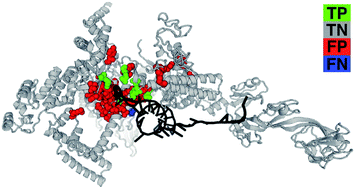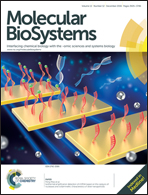An evolution-based DNA-binding residue predictor using a dynamic query-driven learning scheme†
Abstract
DNA-binding proteins play a pivotal role in various biological activities. Identification of DNA-binding residues (DBRs) is of great importance for understanding the mechanism of gene regulations and chromatin remodeling. Most traditional computational methods usually construct their predictors on static non-redundant datasets. They excluded many homologous DNA-binding proteins so as to guarantee the generalization capability of their models. However, those ignored samples may potentially provide useful clues when studying protein–DNA interactions, which have not obtained enough attention. In view of this, we propose a novel method, namely DQPred-DBR, to fill the gap of DBR predictions. First, a large-scale extensible sample pool was compiled. Second, evolution-based features in the form of a relative position specific score matrix and covariant evolutionary conservation descriptors were used to encode the feature space. Third, a dynamic query-driven learning scheme was designed to make more use of proteins with known structure and functions. In comparison with a traditional static model, the introduction of dynamic models could obviously improve the prediction performance. Experimental results from the benchmark and independent datasets proved that our DQPred-DBR had promising generalization capability. It was capable of producing decent predictions and outperforms many state-of-the-art methods. For the convenience of academic use, our proposed method was also implemented as a web server at http://59.73.198.144:8080/DQPred-DBR/.


 Please wait while we load your content...
Please wait while we load your content...